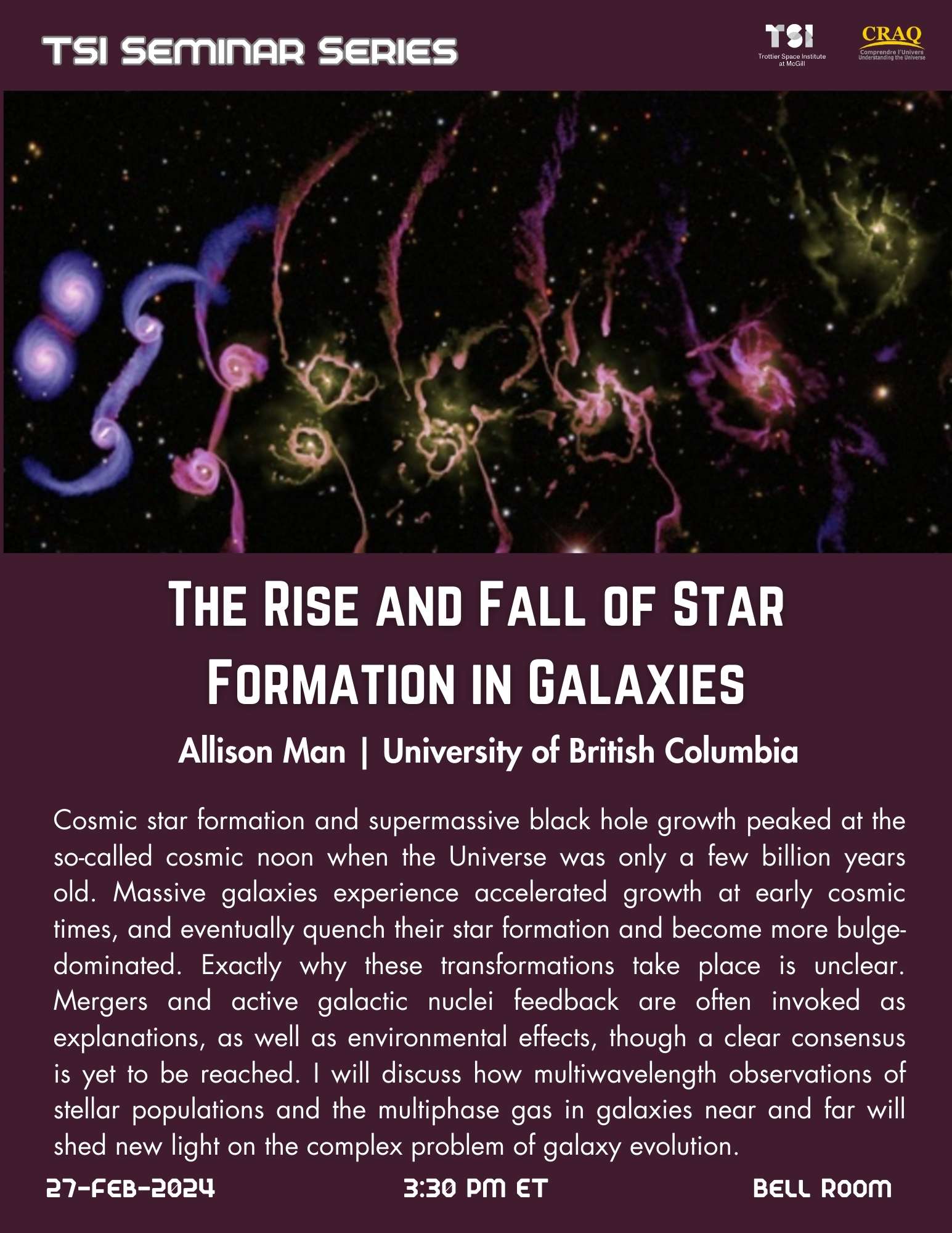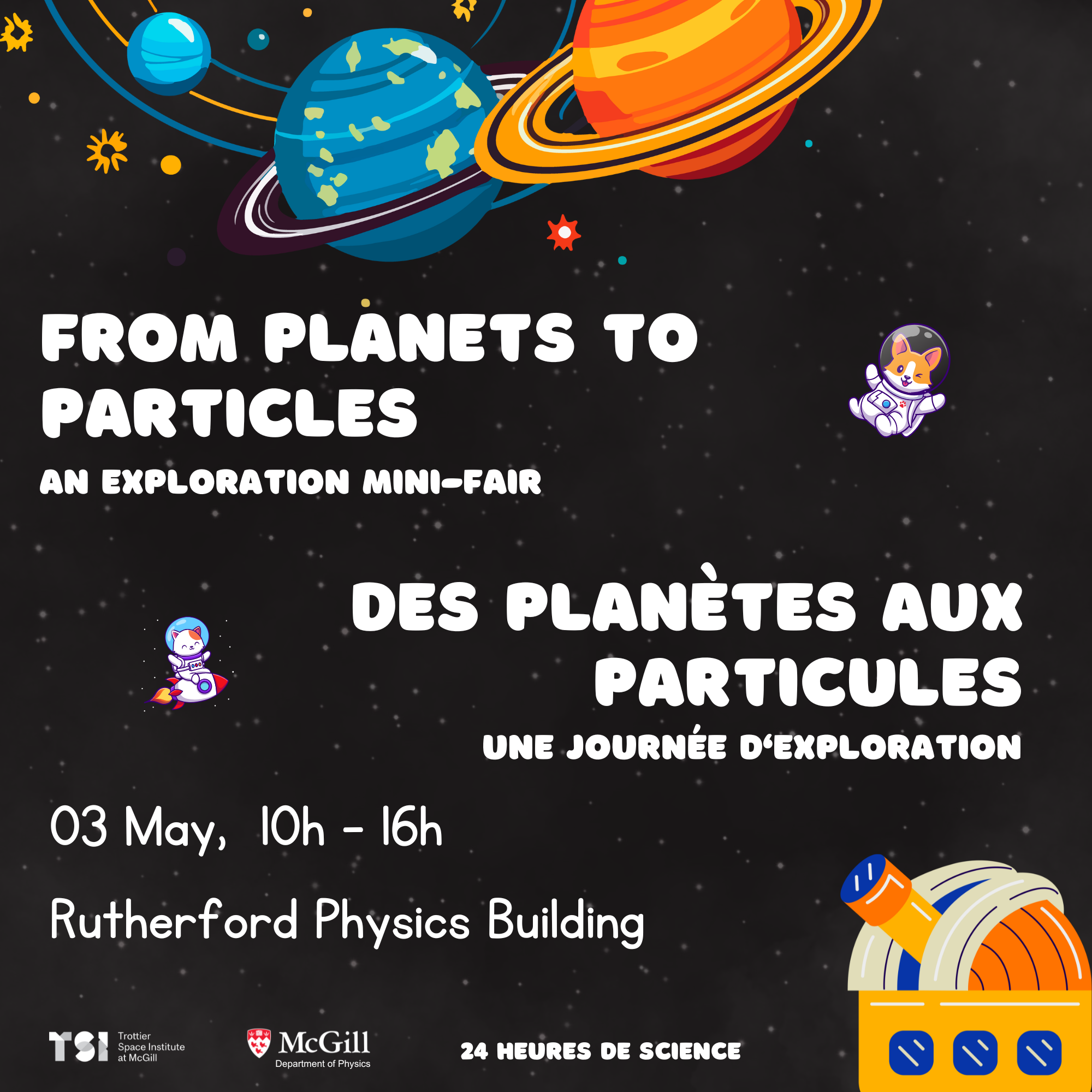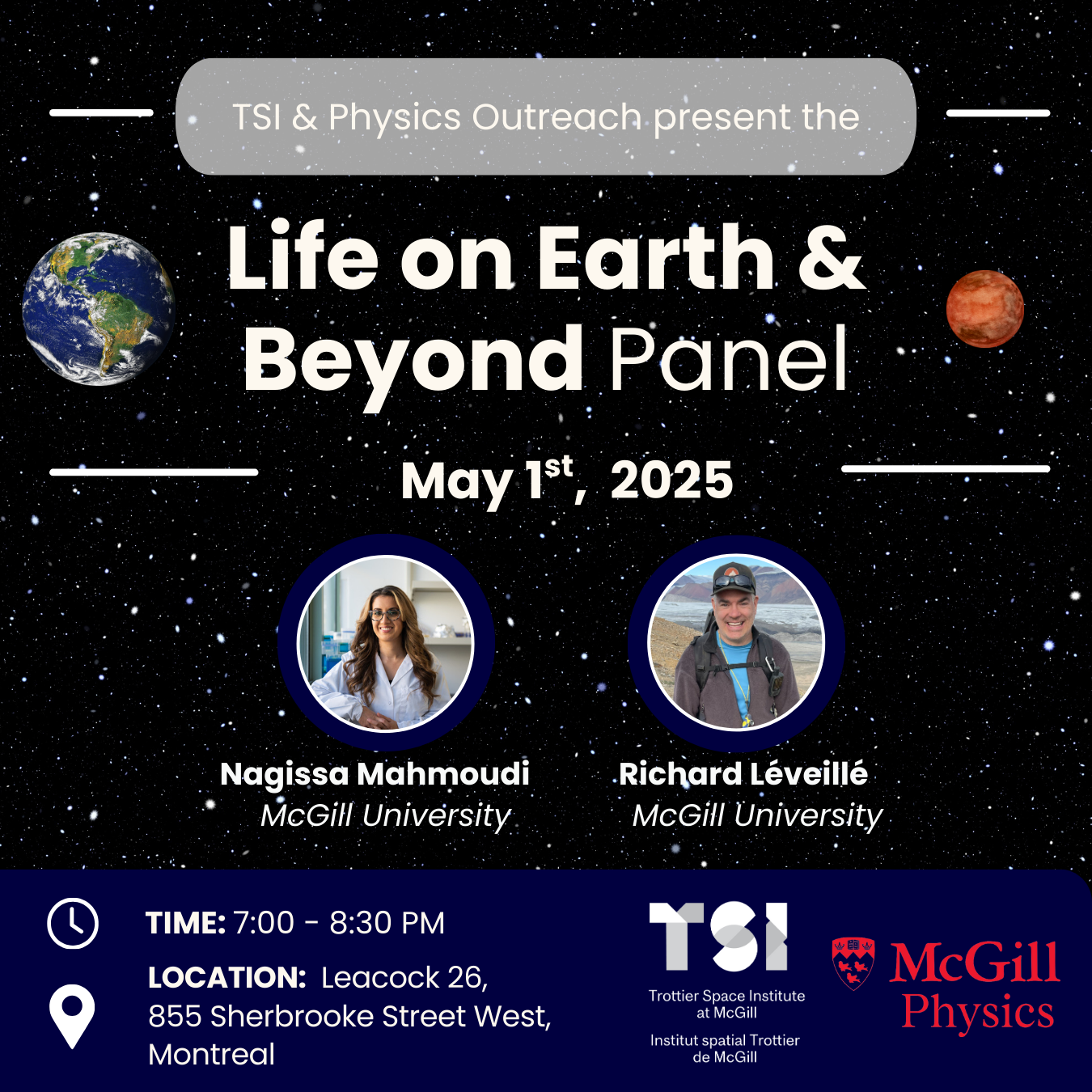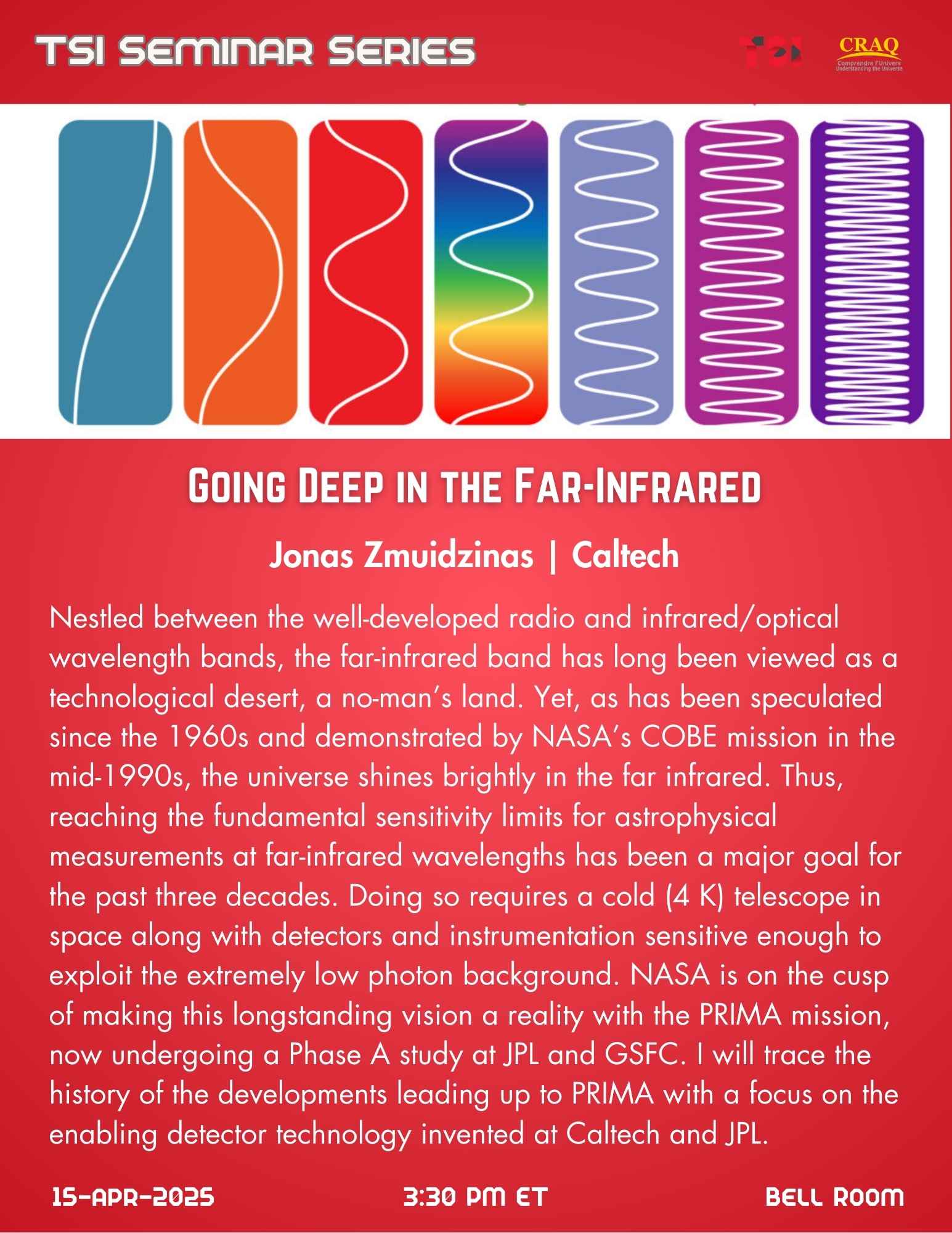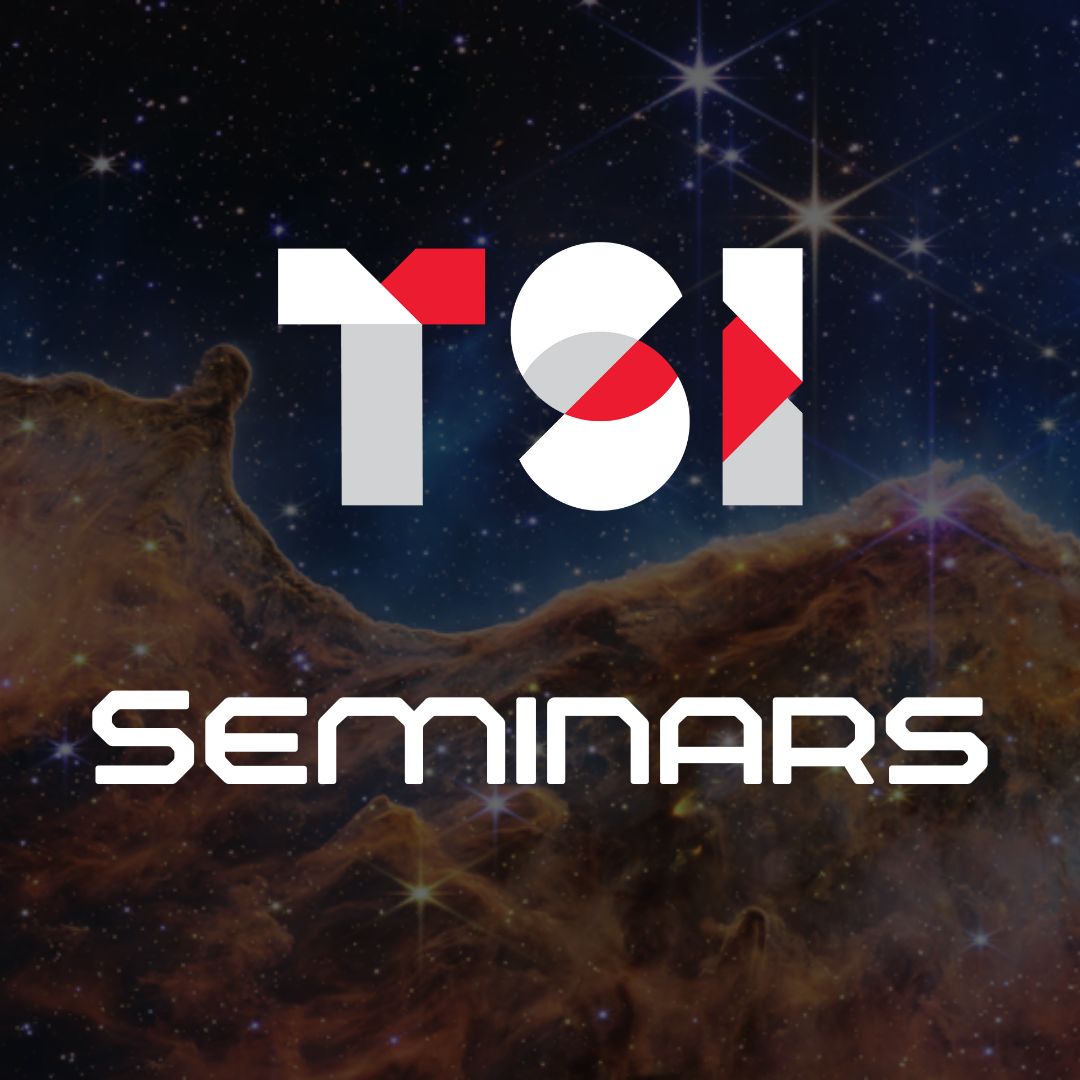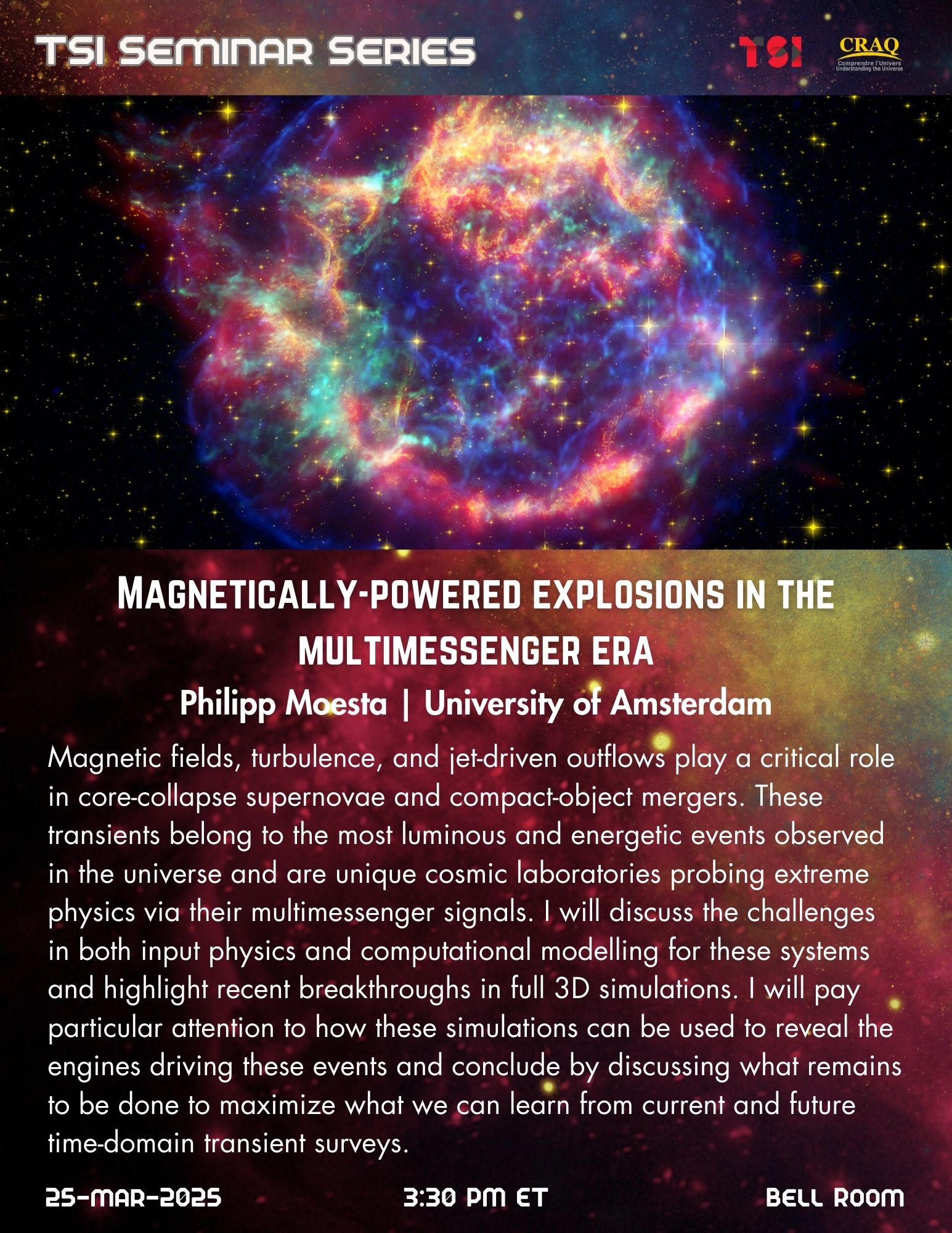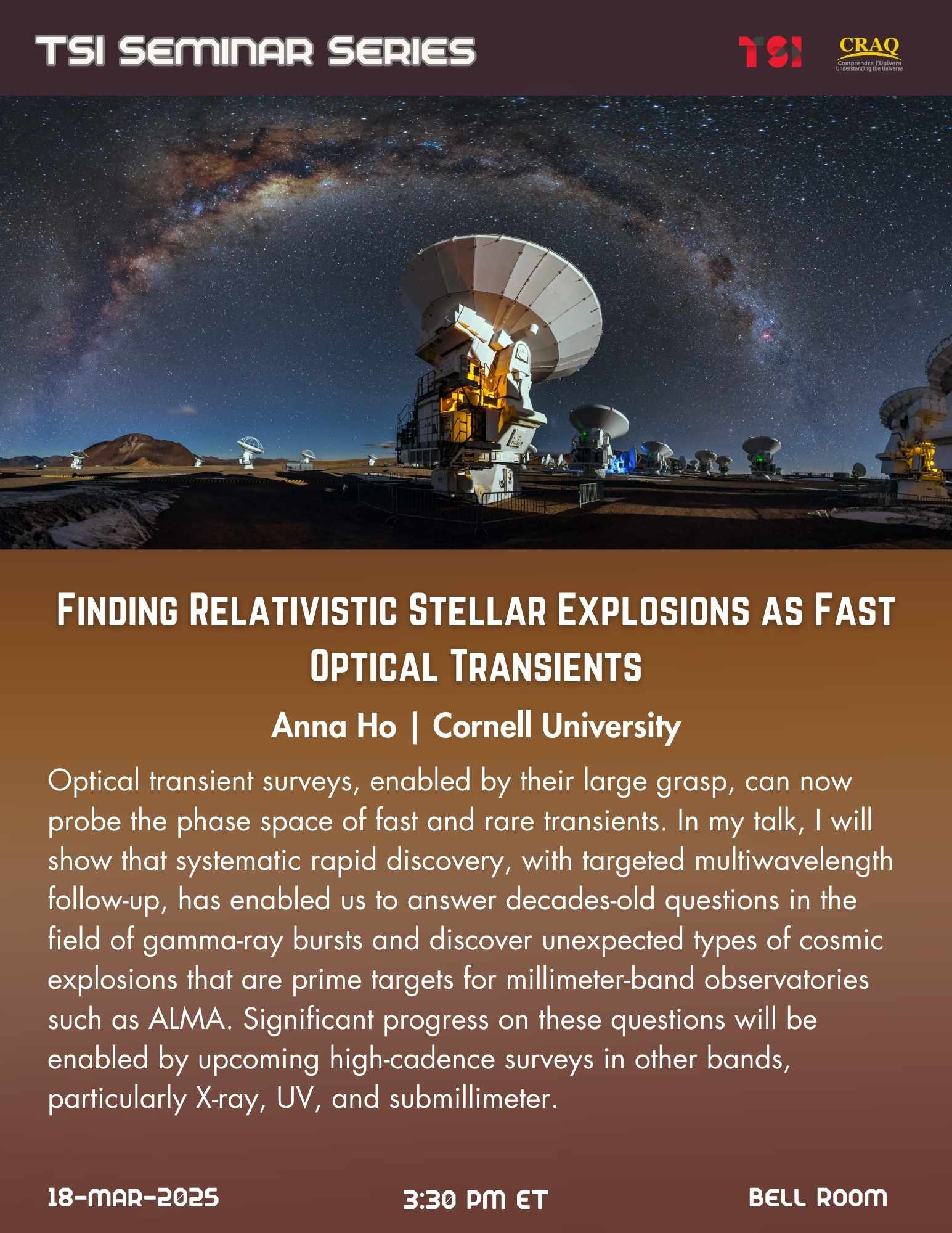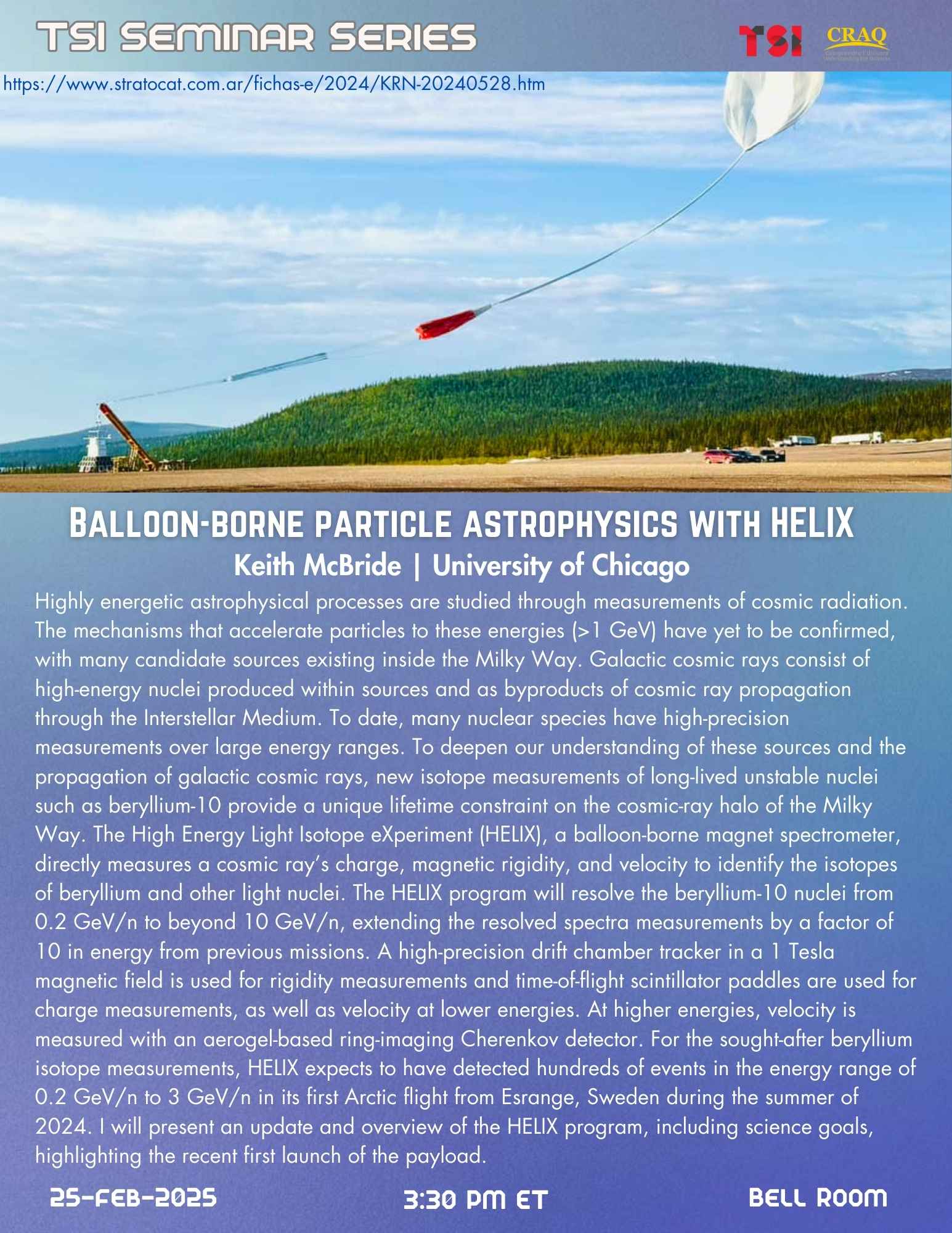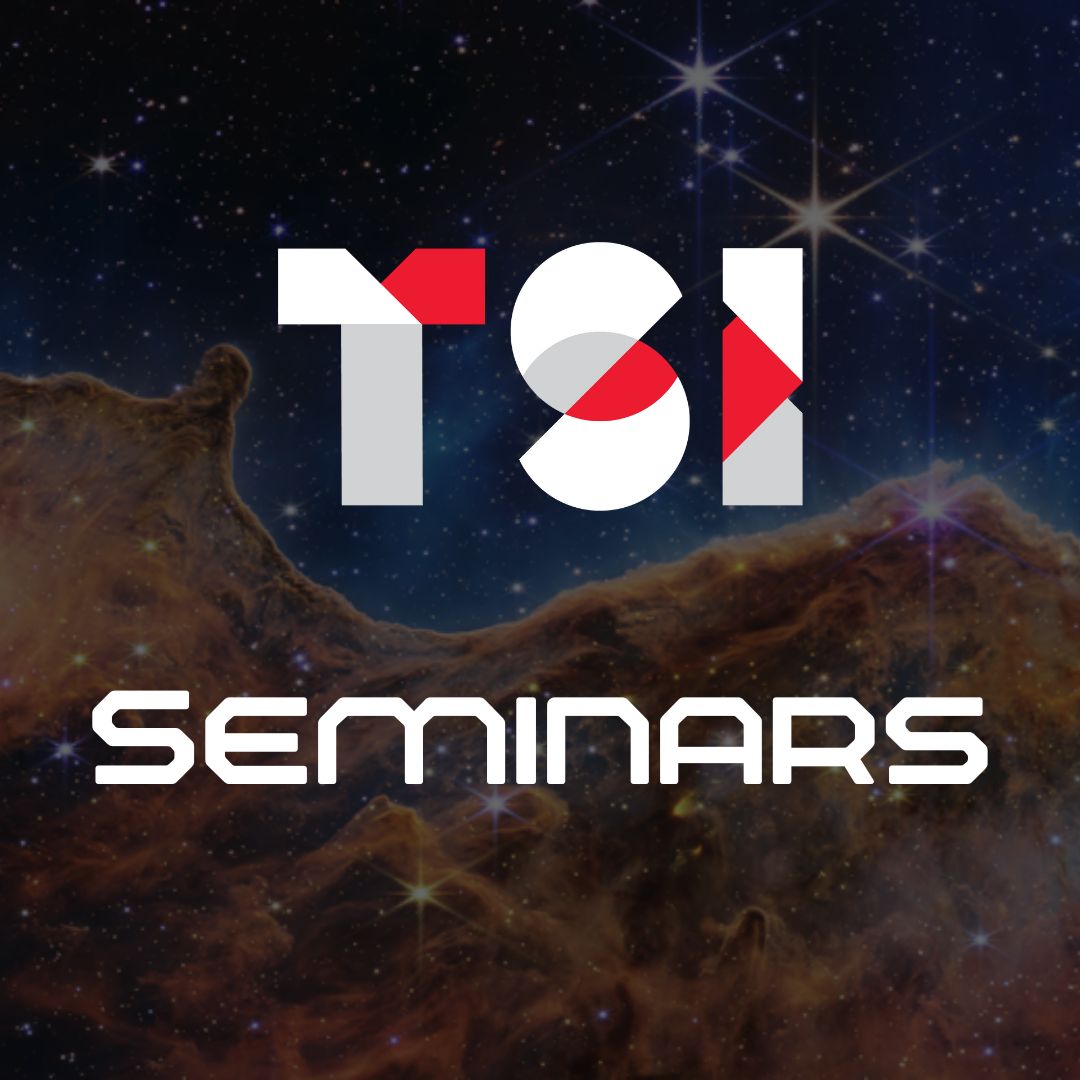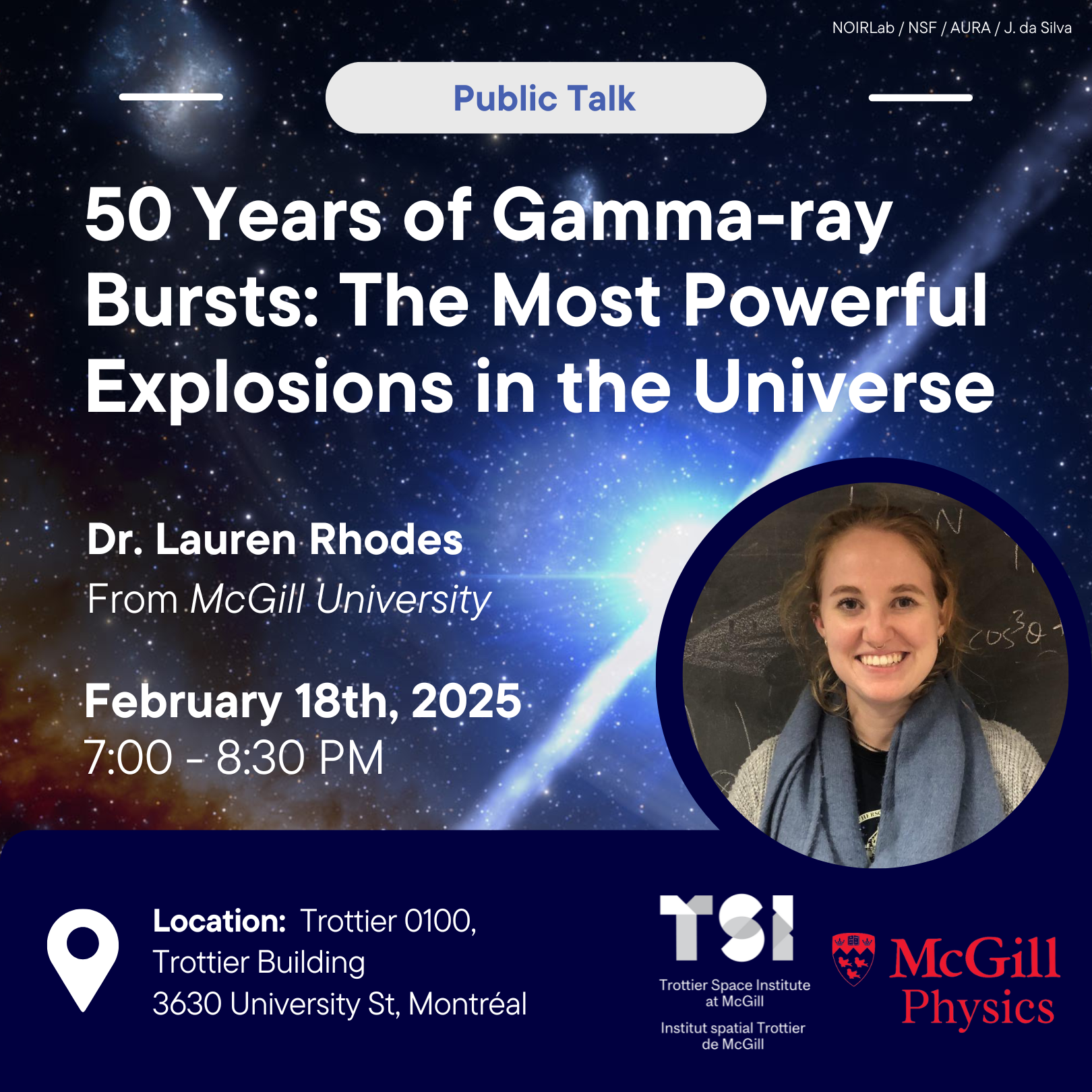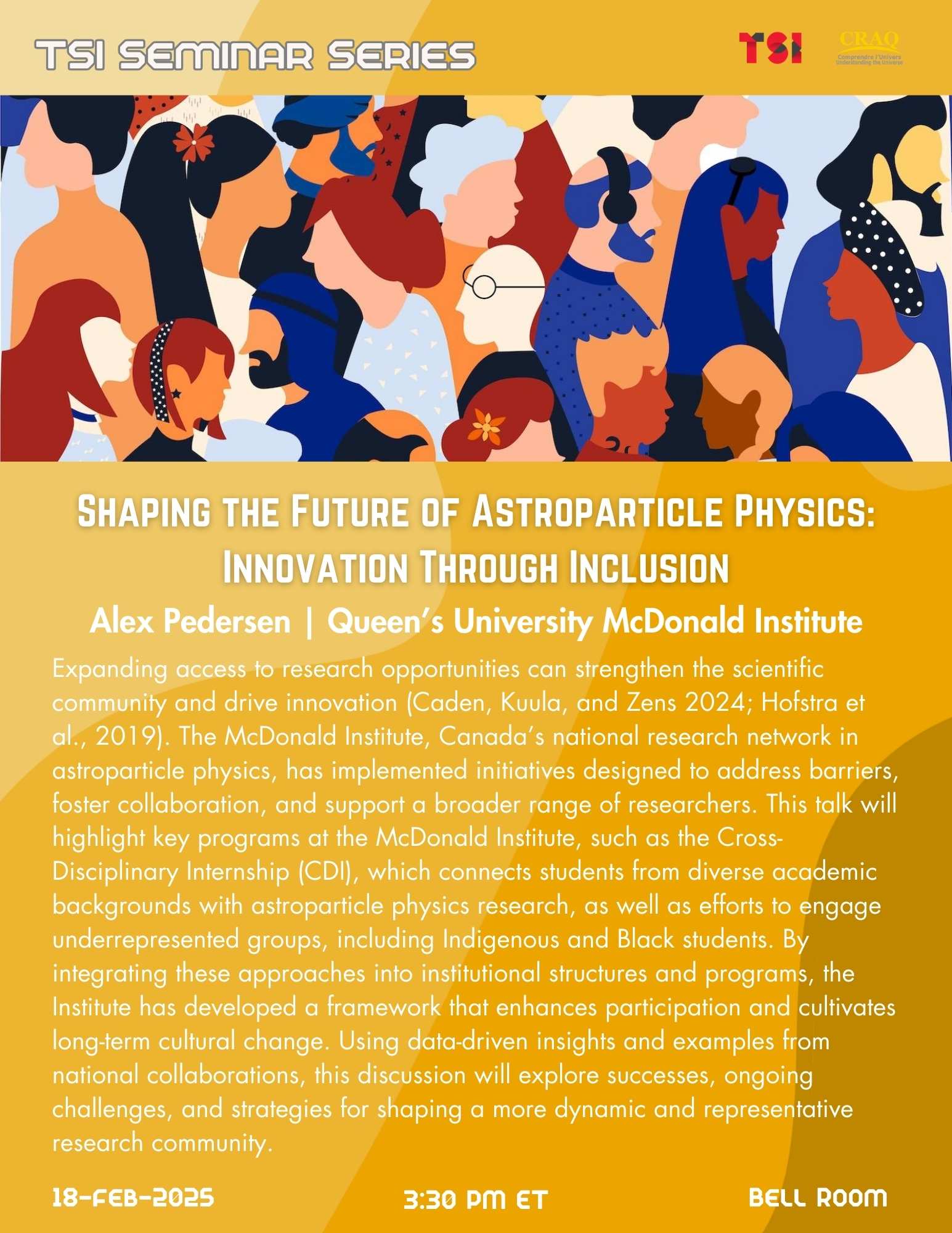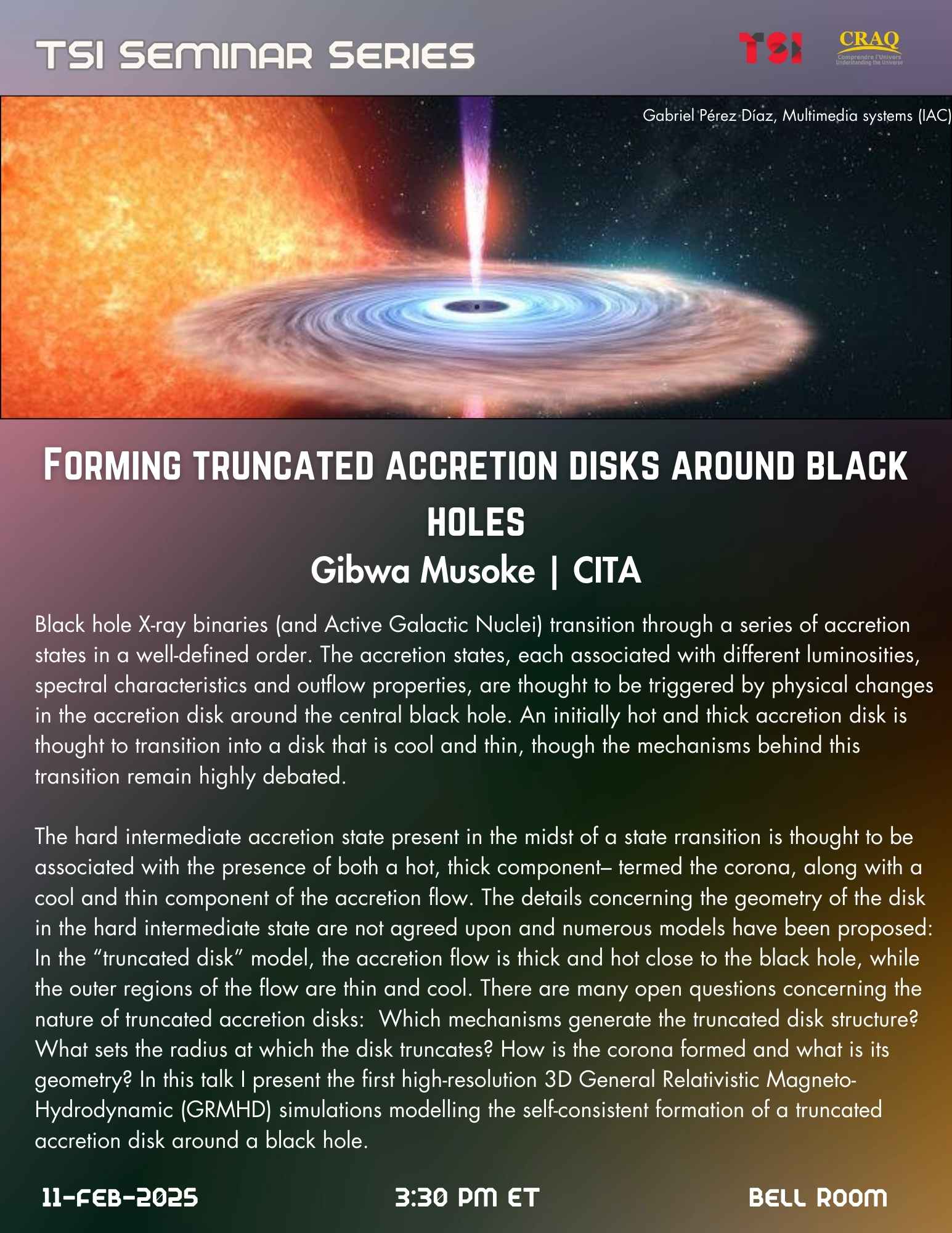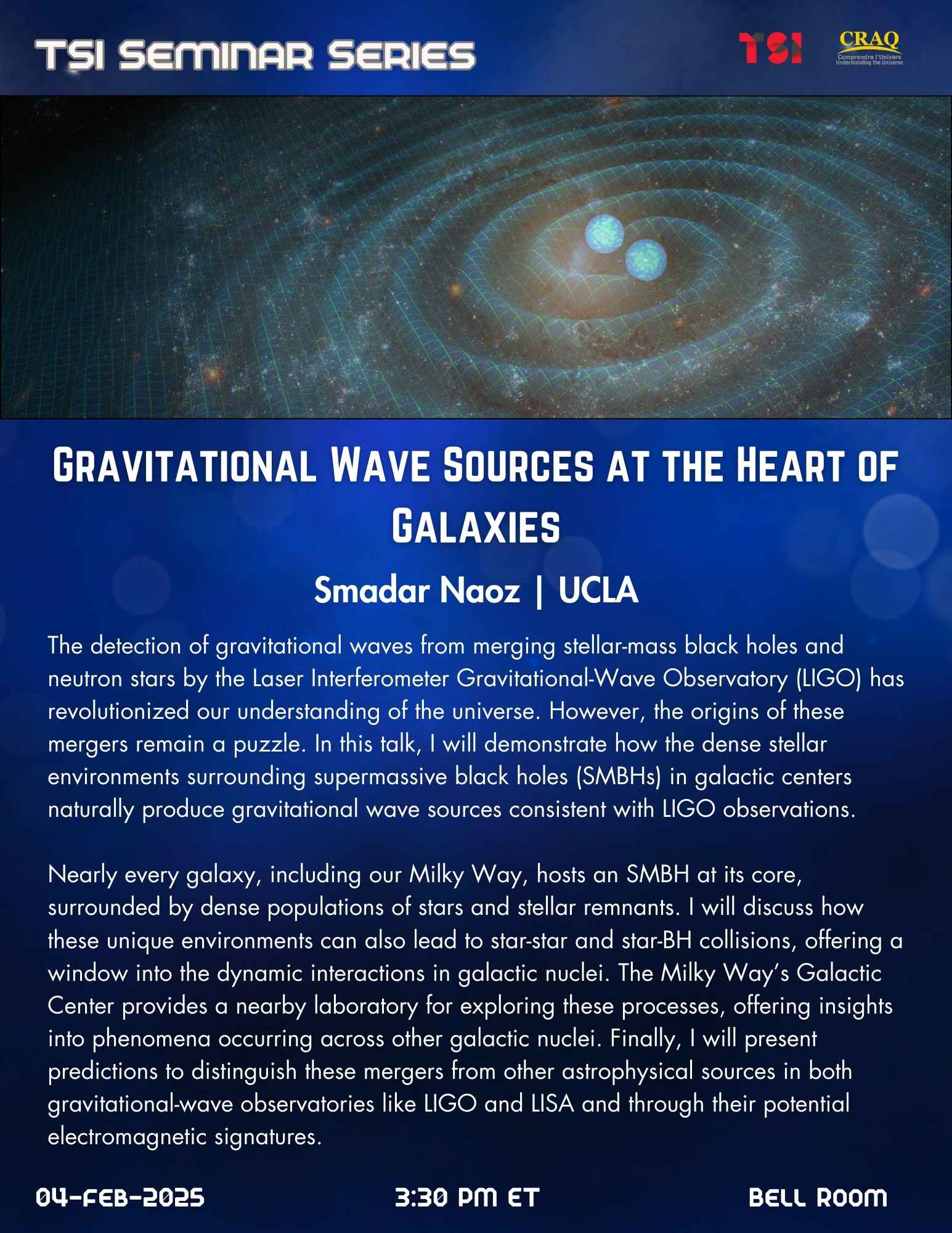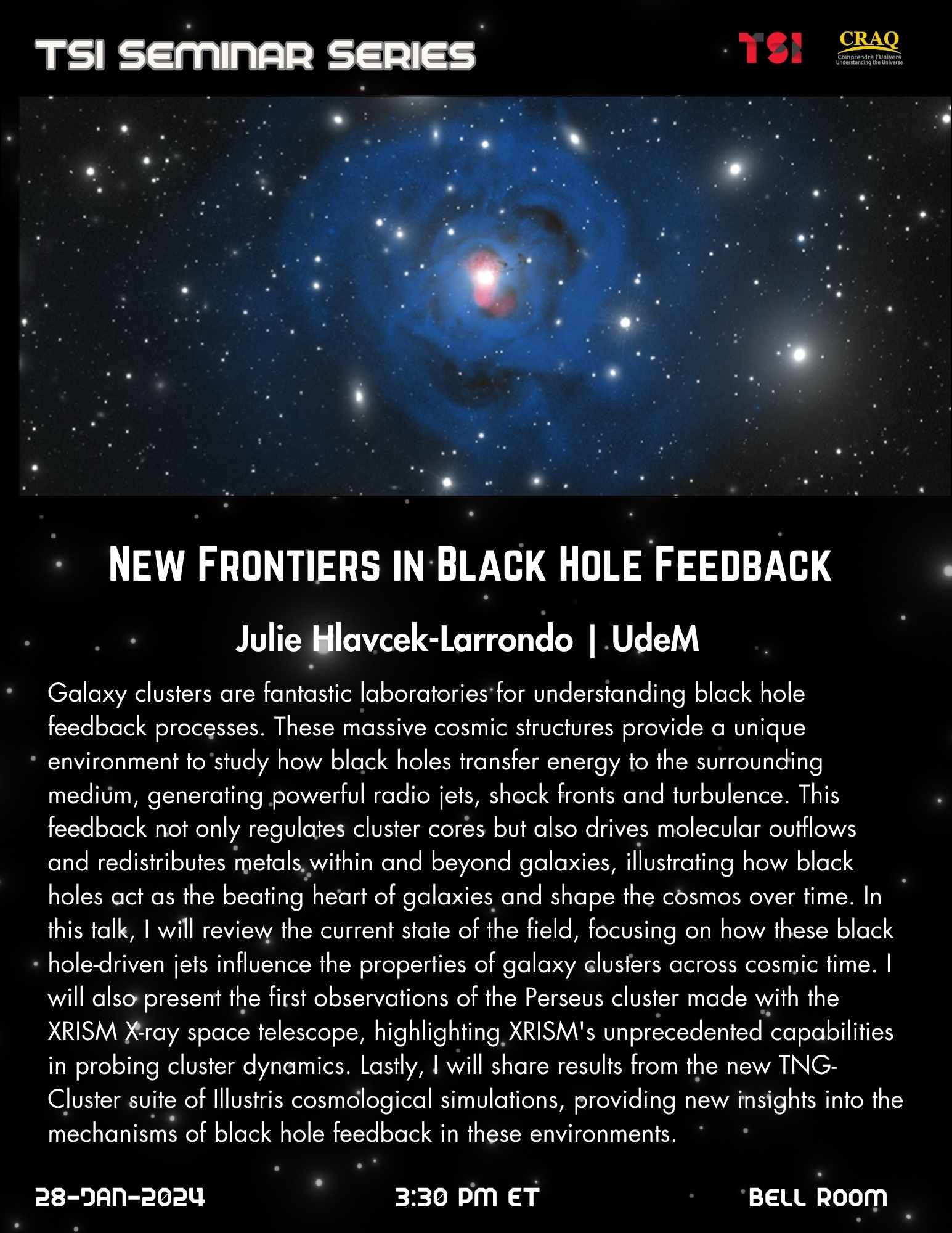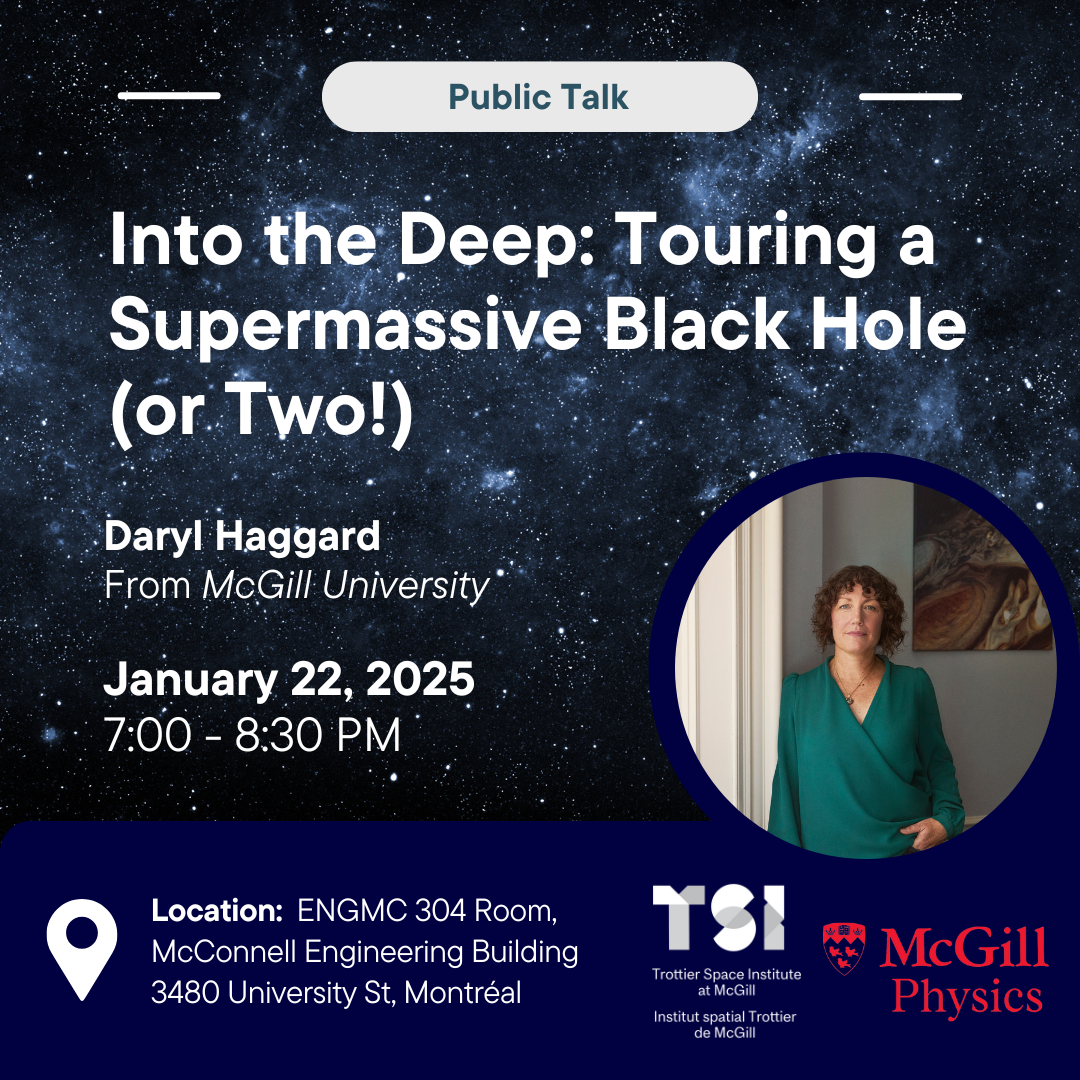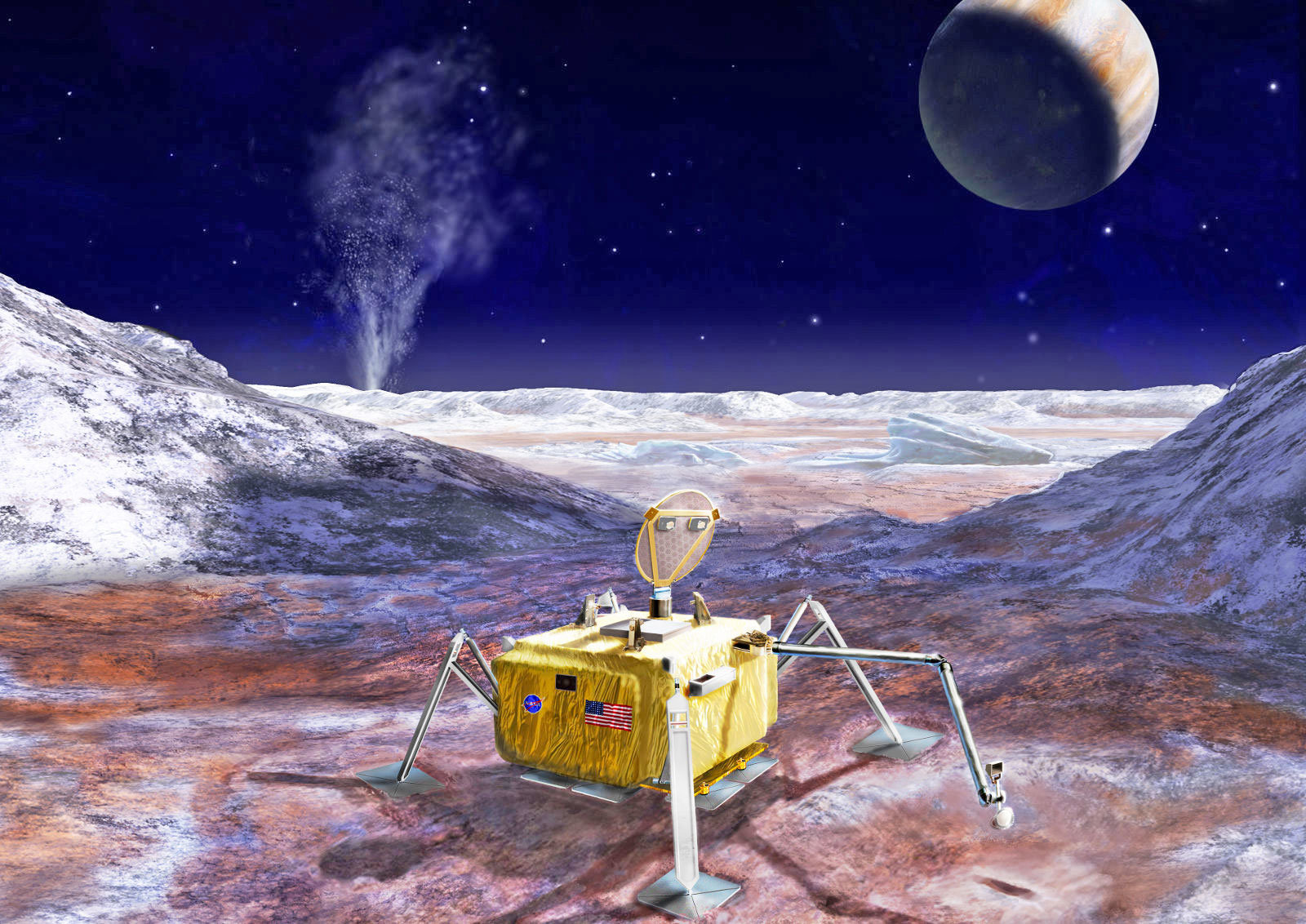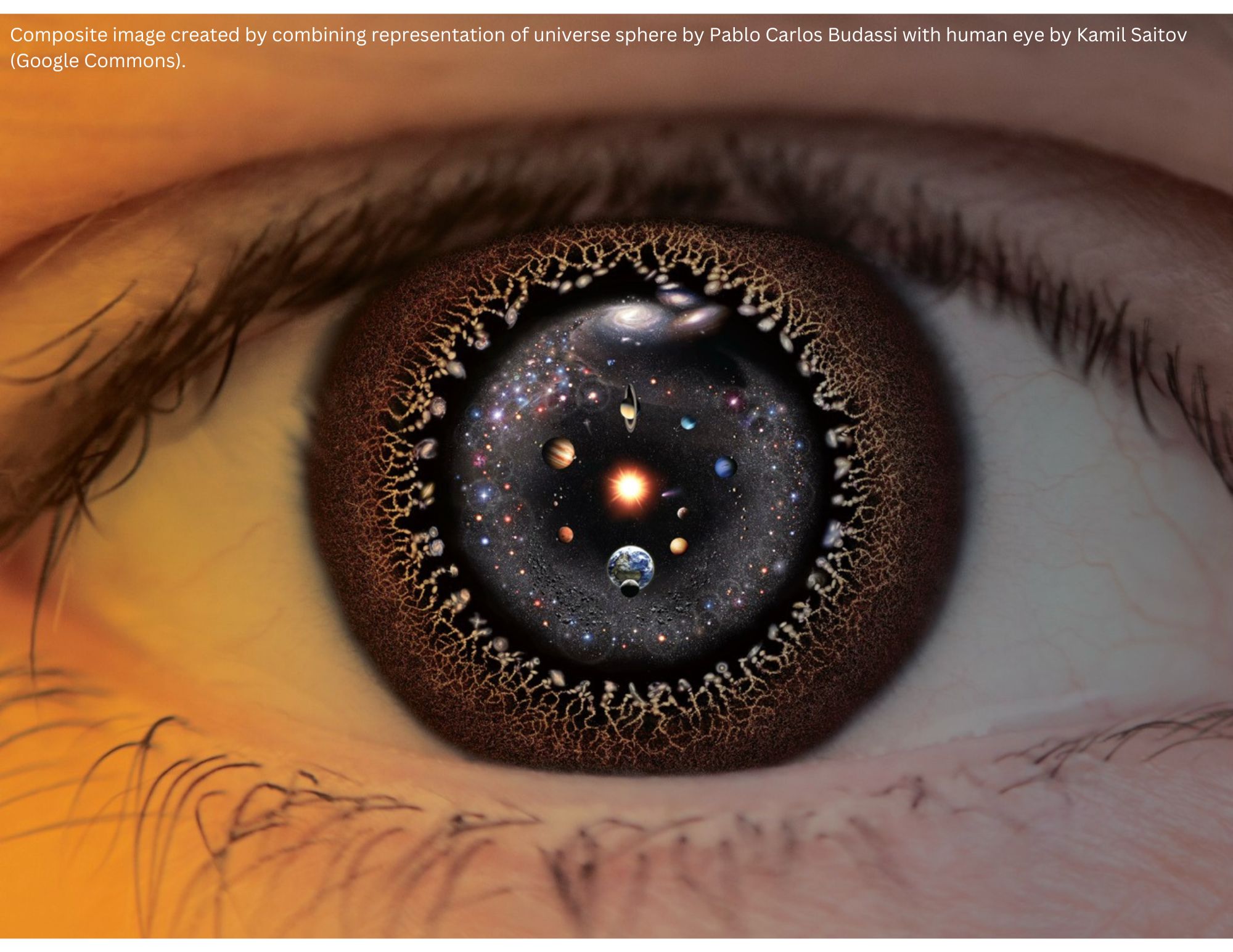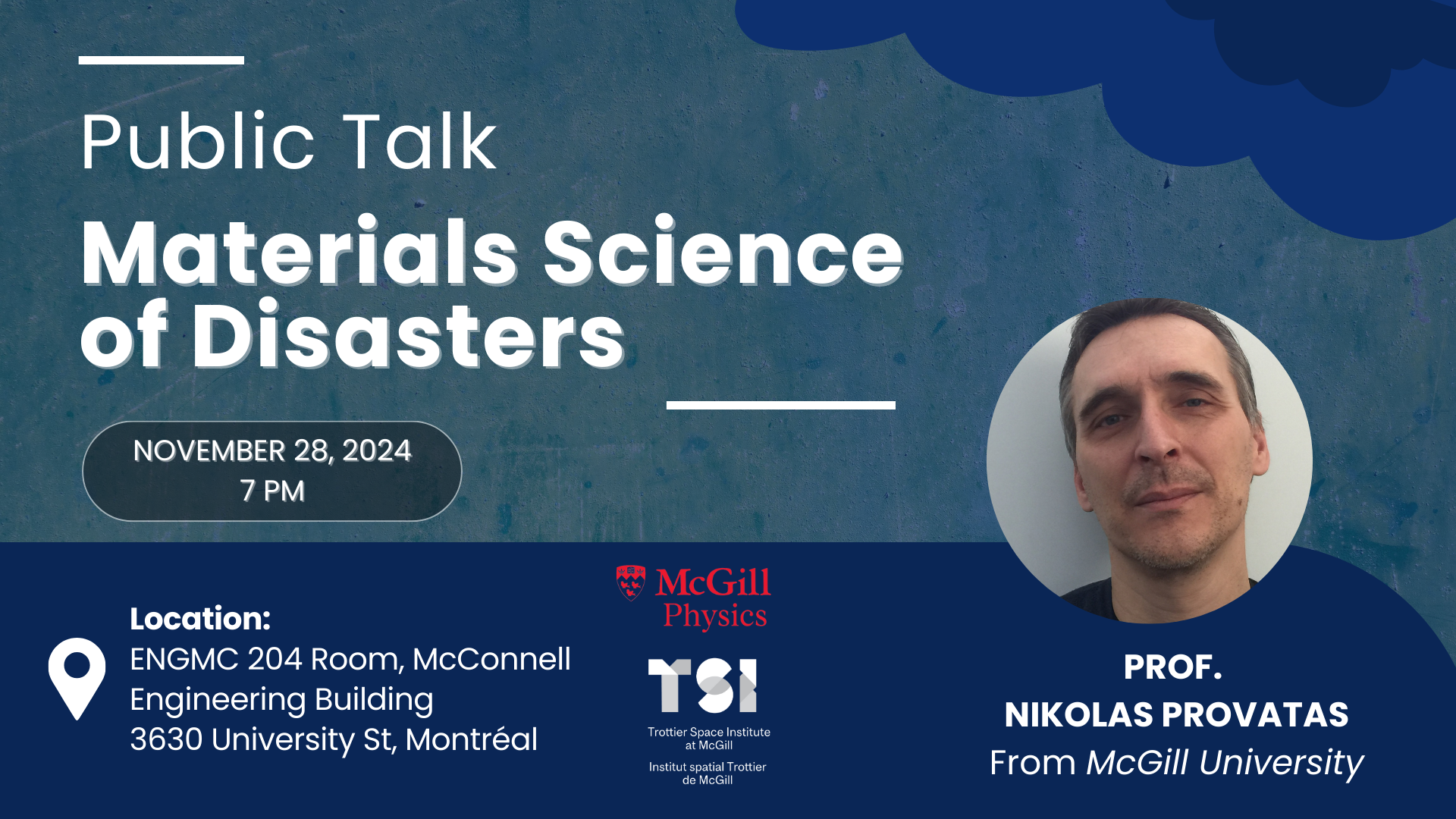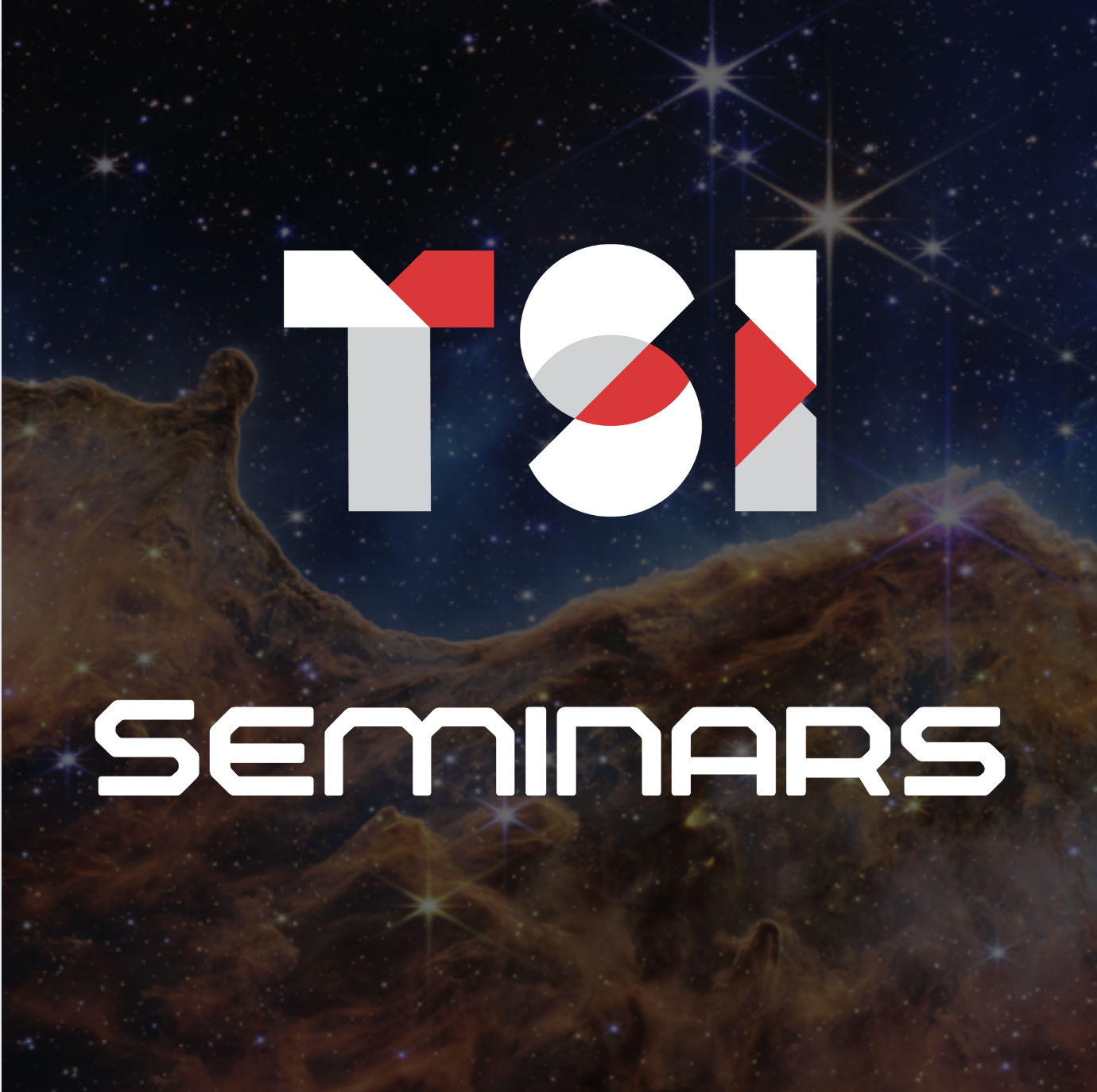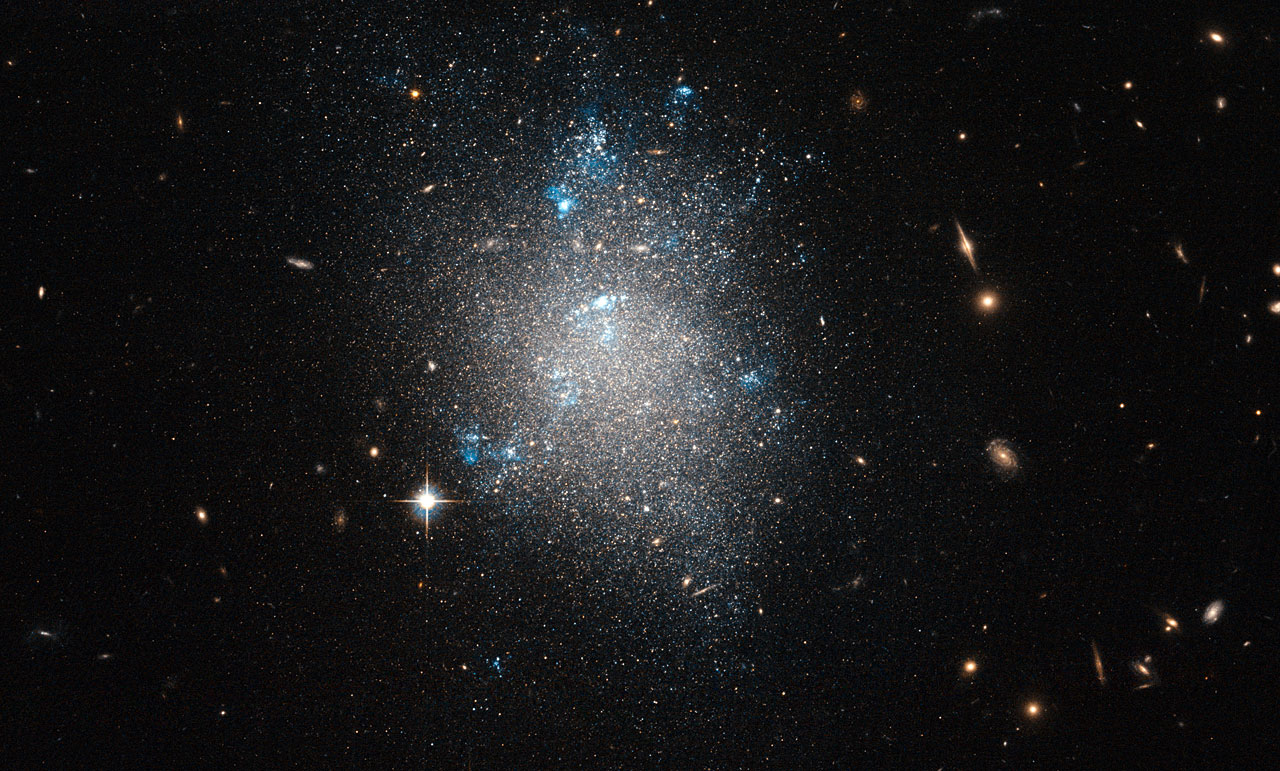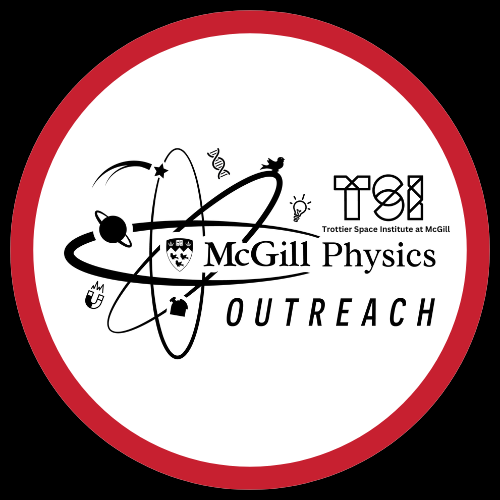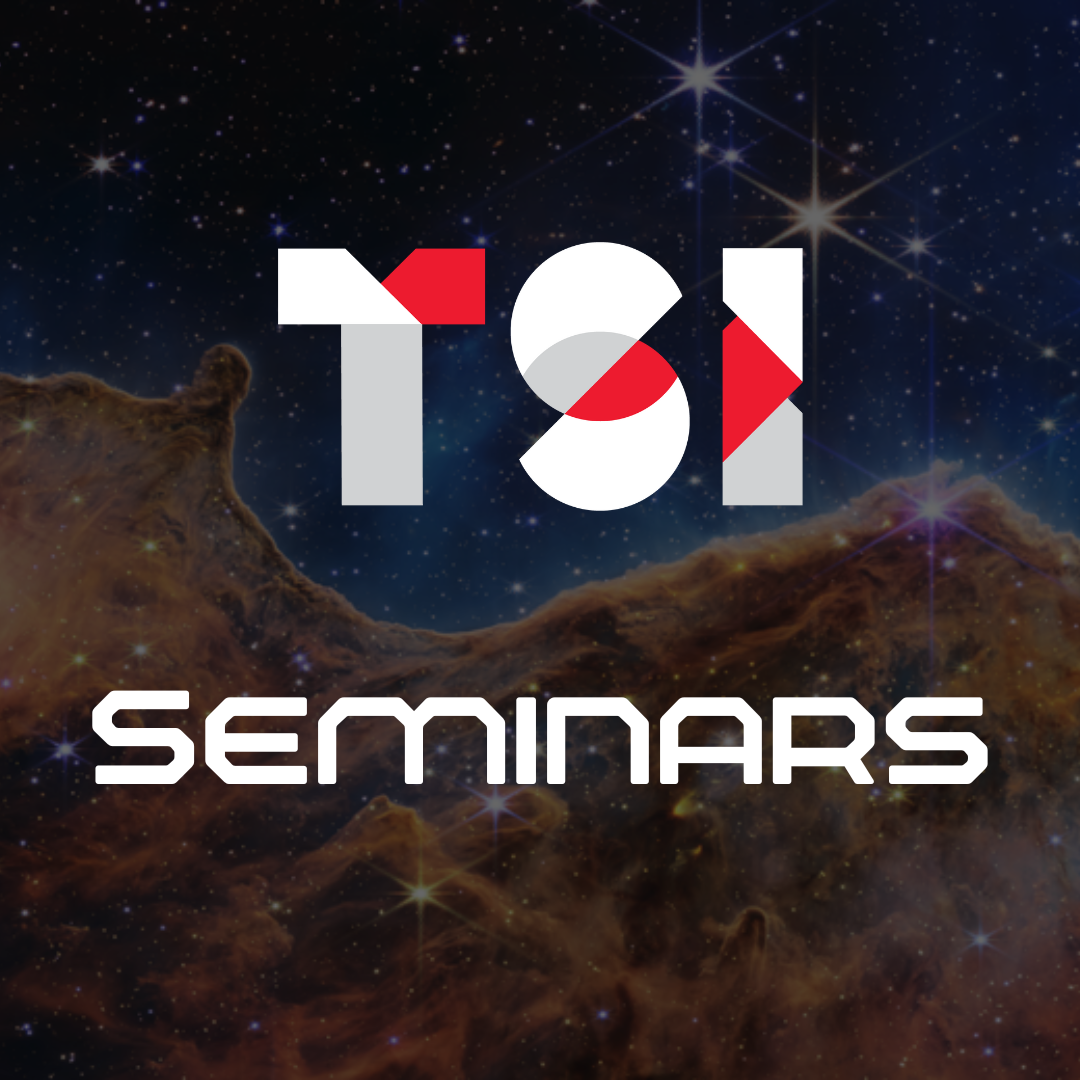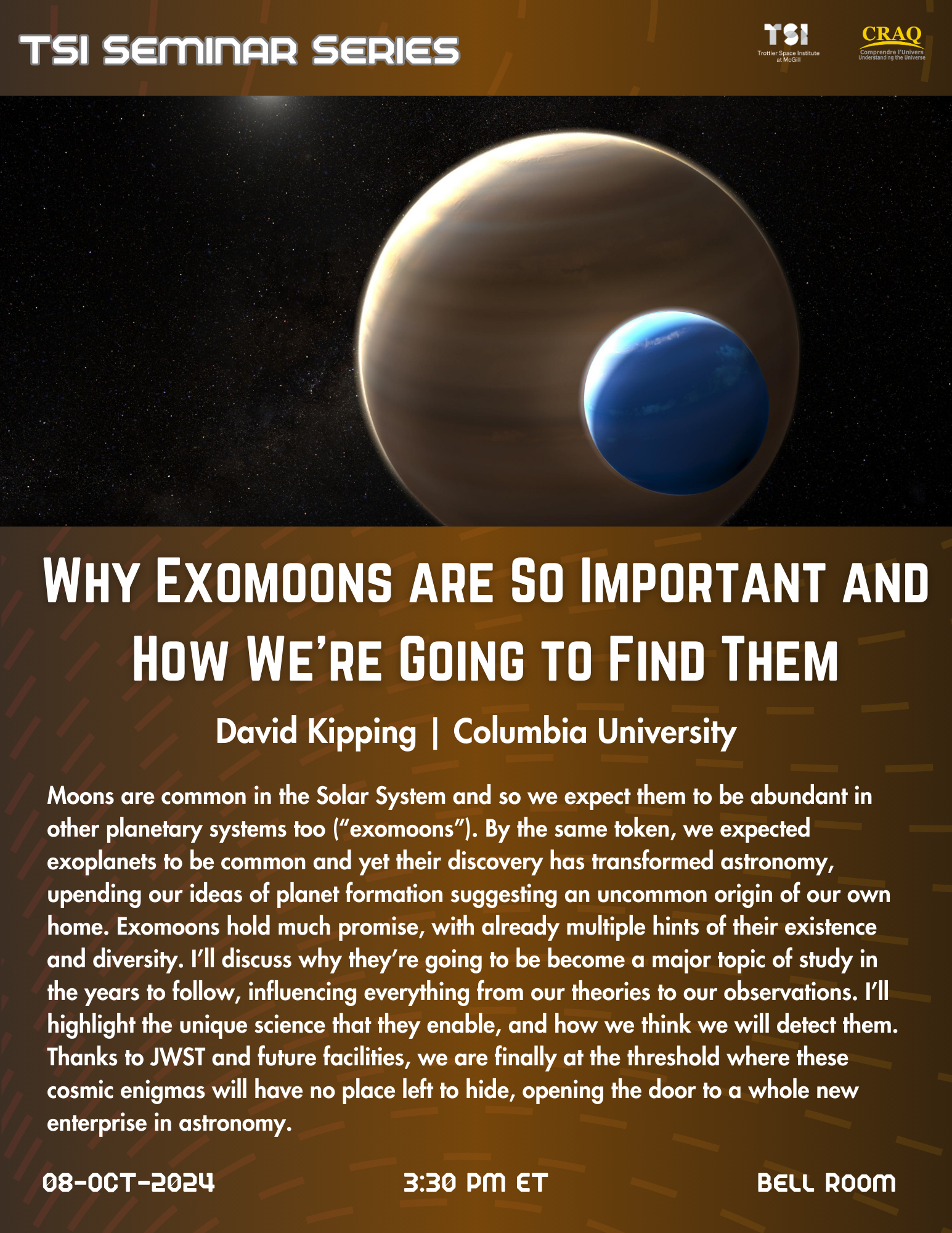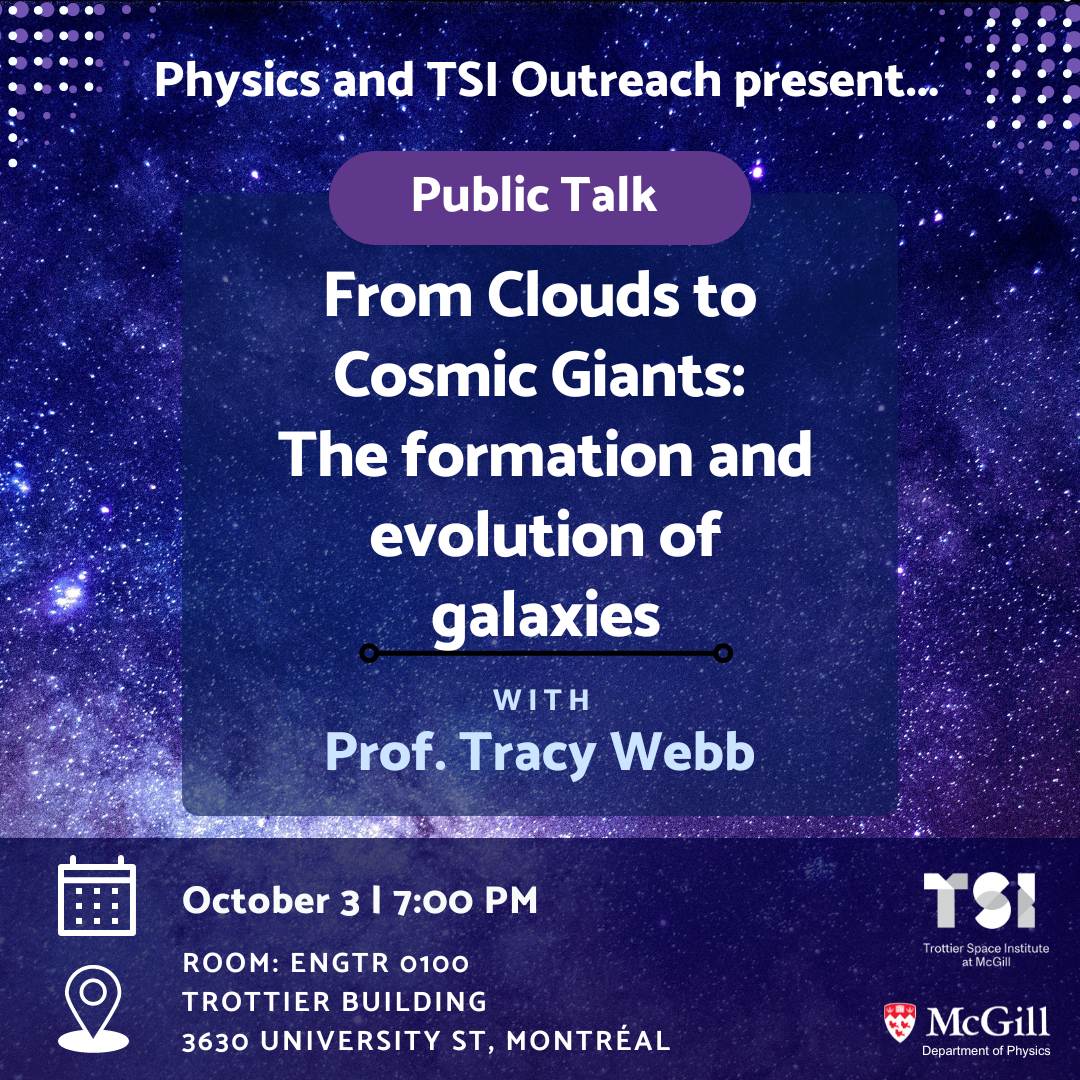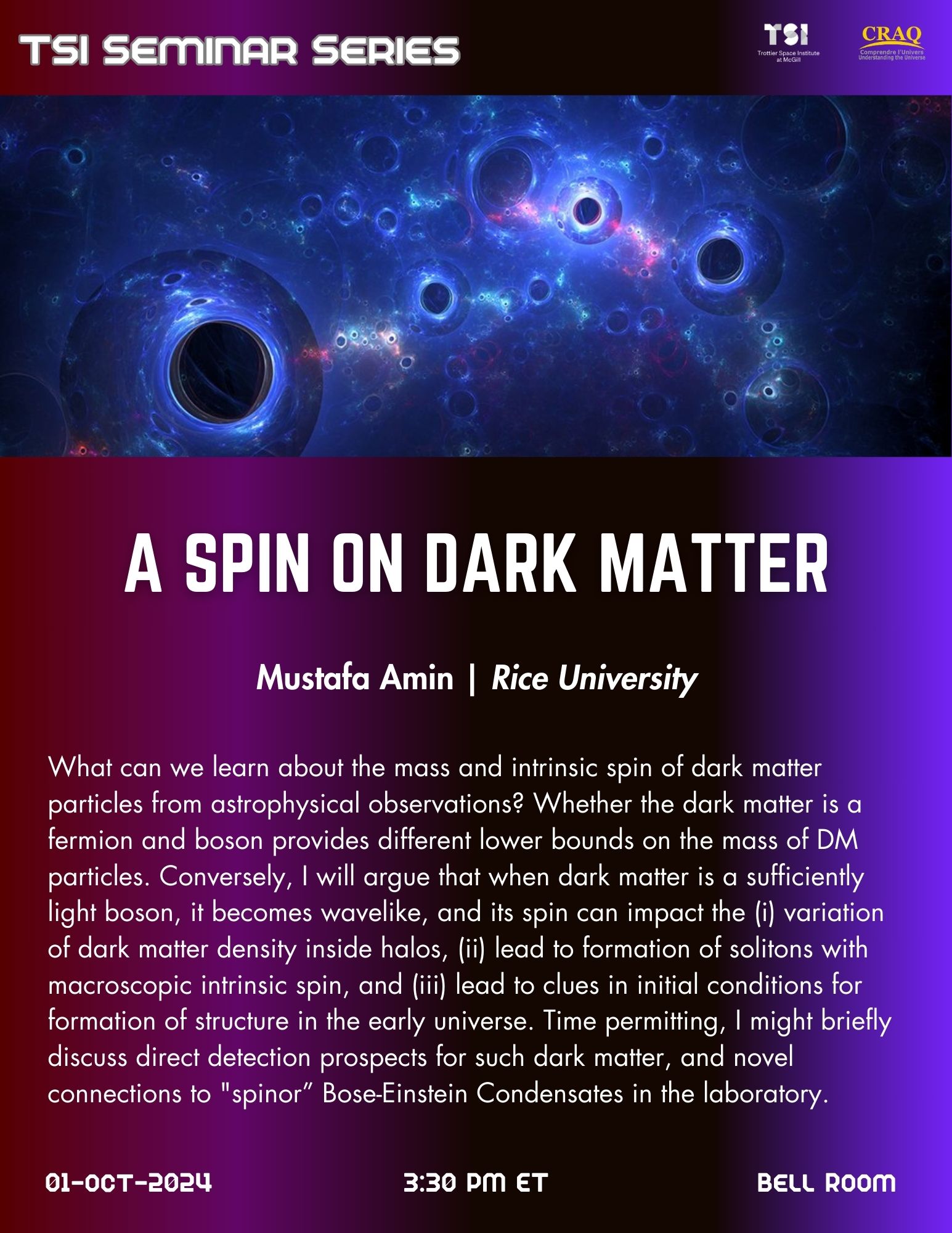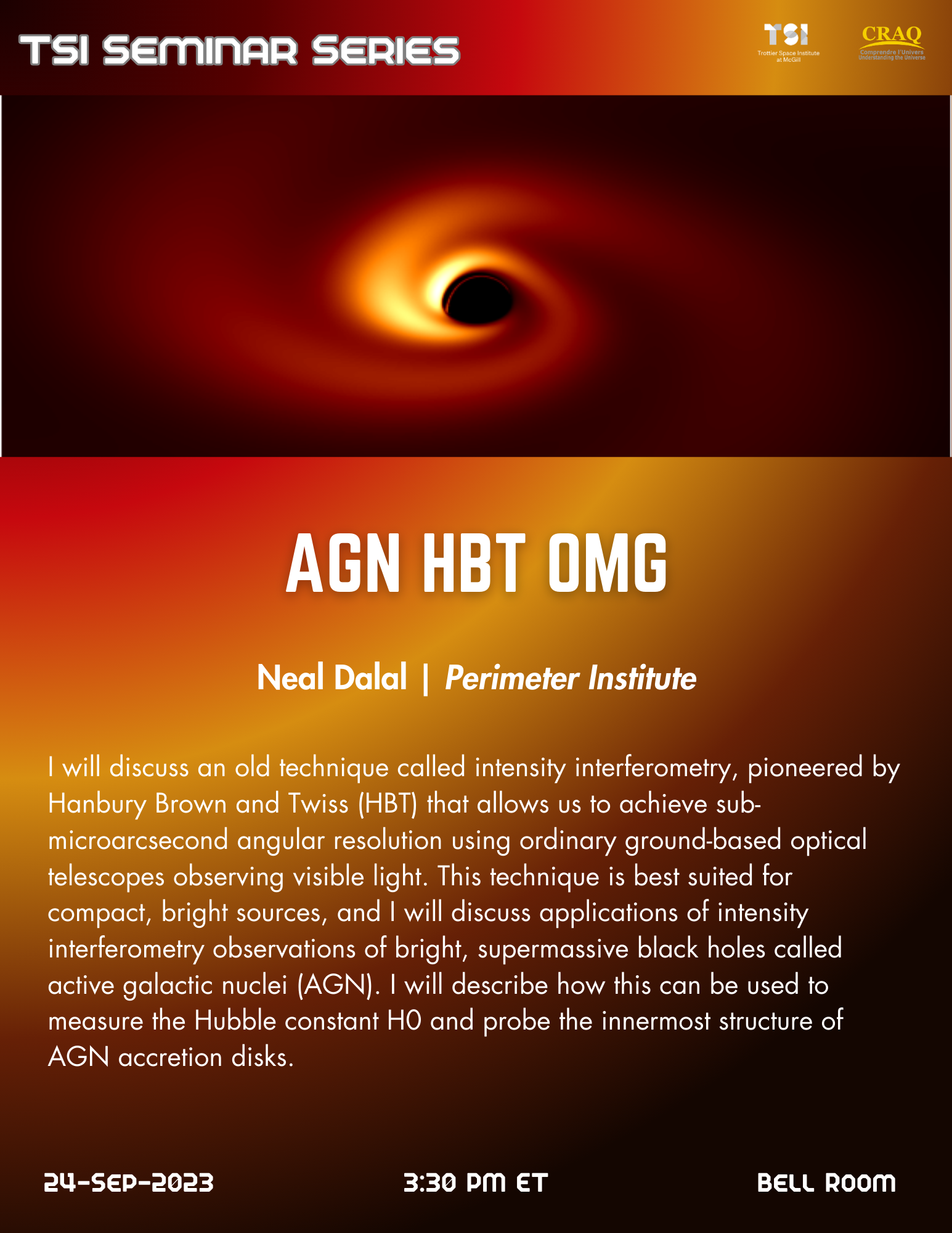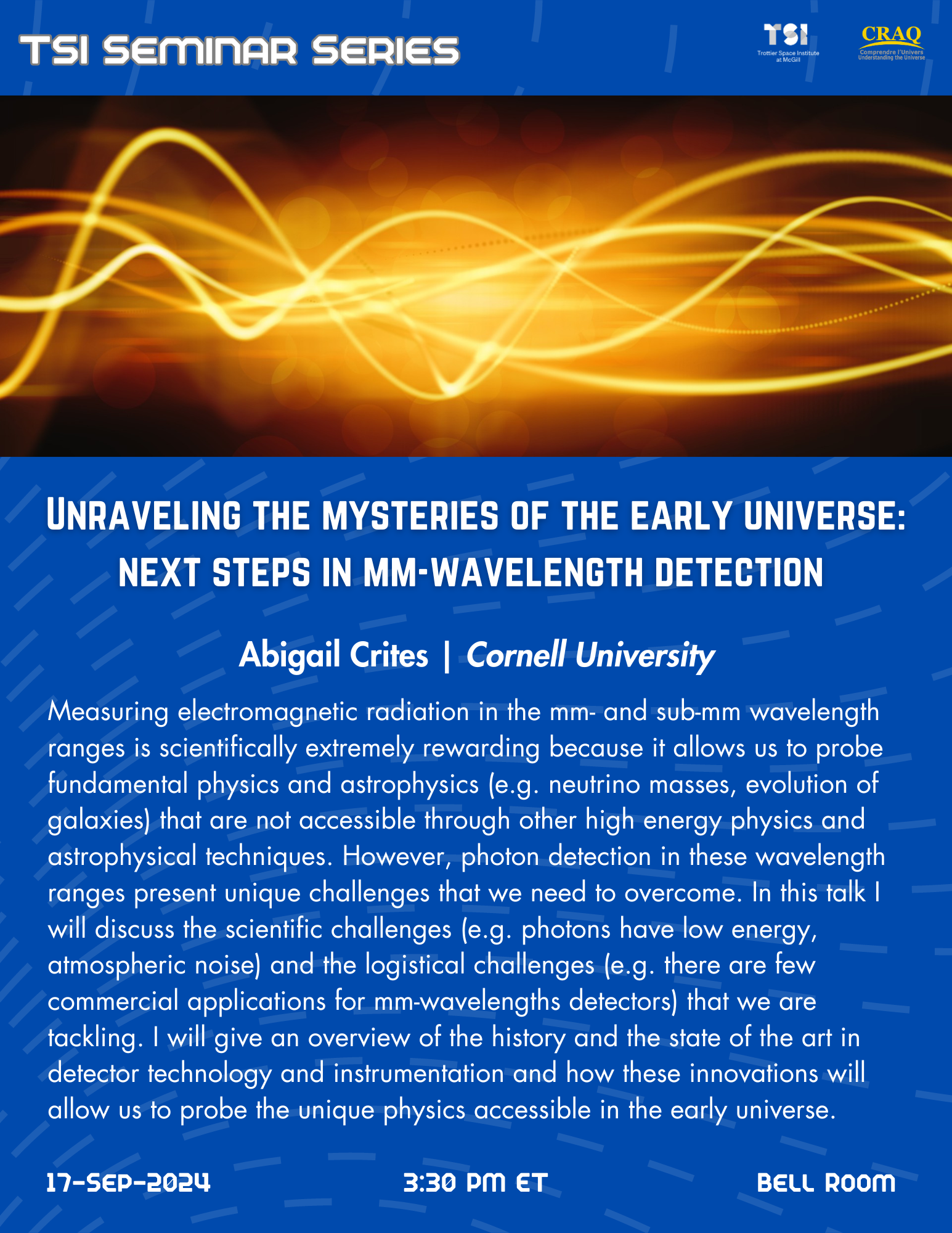The Rise and Fall of Star Formation in Galaxies
Allison Man
(University of British Columbia)
Feb 27, 2024 3:30 PM
TSI Seminar
Abstract:
Cosmic star formation and supermassive black hole growth peaked at the so-called cosmic noon when the Universe was only a few billion years old. Massive galaxies experience accelerated growth at early cosmic times, and eventually quench their star formation and become more bulge-dominated. Exactly why these transformations take place is unclear. Mergers and active galactic nuclei feedback are often invoked as explanations, as well as environmental effects, though a clear consensus is yet to be reached. I will discuss how multiwavelength observations of stellar populations and the multiphase gas in galaxies near and far will shed new light on the complex problem of galaxy evolution.
Bio:
Dr. Allison Man is an assistant professor at the University of British Columbia. Allison received her PhD in Astrophysics at the University of Copenhagen. Prior to joining UBC, she was an ESO Fellow at the European Southern Observatory Headquarters and a Dunlap Fellow at the Dunlap Institute for Astronomy and Astrophysics at the University of Toronto.

